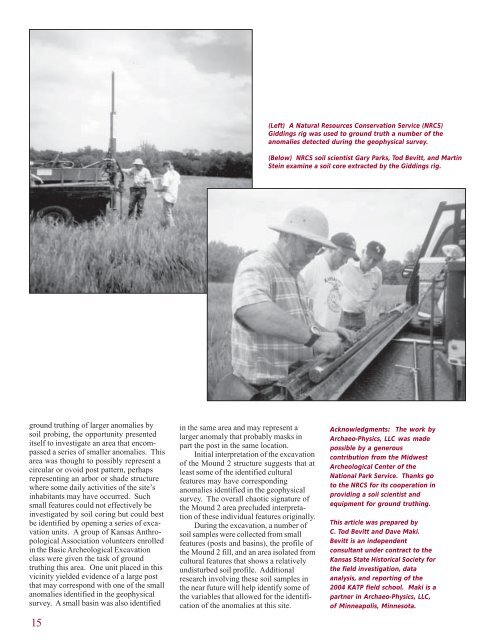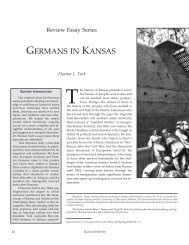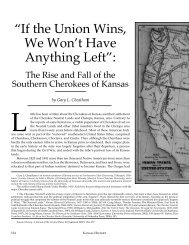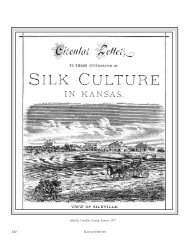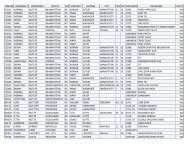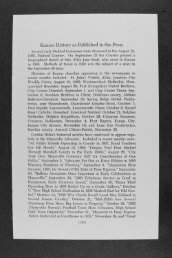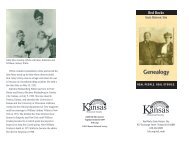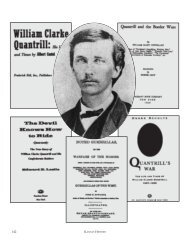July/August 2004 - Kansas Historical Society
July/August 2004 - Kansas Historical Society
July/August 2004 - Kansas Historical Society
Create successful ePaper yourself
Turn your PDF publications into a flip-book with our unique Google optimized e-Paper software.
ground truthing of larger anomalies by<br />
soil probing, the opportunity presented<br />
itself to investigate an area that encompassed<br />
a series of smaller anomalies. This<br />
area was thought to possibly represent a<br />
circular or ovoid post pattern, perhaps<br />
representing an arbor or shade structure<br />
where some daily activities of the site’s<br />
inhabitants may have occurred. Such<br />
small features could not effectively be<br />
investigated by soil coring but could best<br />
be identified by opening a series of excavation<br />
units. A group of <strong>Kansas</strong> Anthropological<br />
Association volunteers enrolled<br />
in the Basic Archeological Excavation<br />
class were given the task of ground<br />
truthing this area. One unit placed in this<br />
vicinity yielded evidence of a large post<br />
that may correspond with one of the small<br />
anomalies identified in the geophysical<br />
survey. A small basin was also identified<br />
15<br />
in the same area and may represent a<br />
larger anomaly that probably masks in<br />
part the post in the same location.<br />
Initial interpretation of the excavation<br />
of the Mound 2 structure suggests that at<br />
least some of the identified cultural<br />
features may have corresponding<br />
anomalies identified in the geophysical<br />
survey. The overall chaotic signature of<br />
the Mound 2 area precluded interpretation<br />
of these individual features originally.<br />
During the excavation, a number of<br />
soil samples were collected from small<br />
features (posts and basins), the profile of<br />
the Mound 2 fill, and an area isolated from<br />
cultural features that shows a relatively<br />
undisturbed soil profile. Additional<br />
research involving these soil samples in<br />
the near future will help identify some of<br />
the variables that allowed for the identification<br />
of the anomalies at this site.<br />
(Left) A Natural Resources Conservation Service (NRCS)<br />
Giddings rig was used to ground truth a number of the<br />
anomalies detected during the geophysical survey.<br />
(Below) NRCS soil scientist Gary Parks, Tod Bevitt, and Martin<br />
Stein examine a soil core extracted by the Giddings rig.<br />
Acknowledgments: The work by<br />
Archaeo-Physics, LLC was made<br />
possible by a generous<br />
contribution from the Midwest<br />
Archeological Center of the<br />
National Park Service. Thanks go<br />
to the NRCS for its cooperation in<br />
providing a soil scientist and<br />
equipment for ground truthing.<br />
This article was prepared by<br />
C. Tod Bevitt and Dave Maki.<br />
Bevitt is an independent<br />
consultant under contract to the<br />
<strong>Kansas</strong> State <strong>Historical</strong> <strong>Society</strong> for<br />
the field investigation, data<br />
analysis, and reporting of the<br />
<strong>2004</strong> KATP field school. Maki is a<br />
partner in Archaeo-Physics, LLC,<br />
of Minneapolis, Minnesota.


